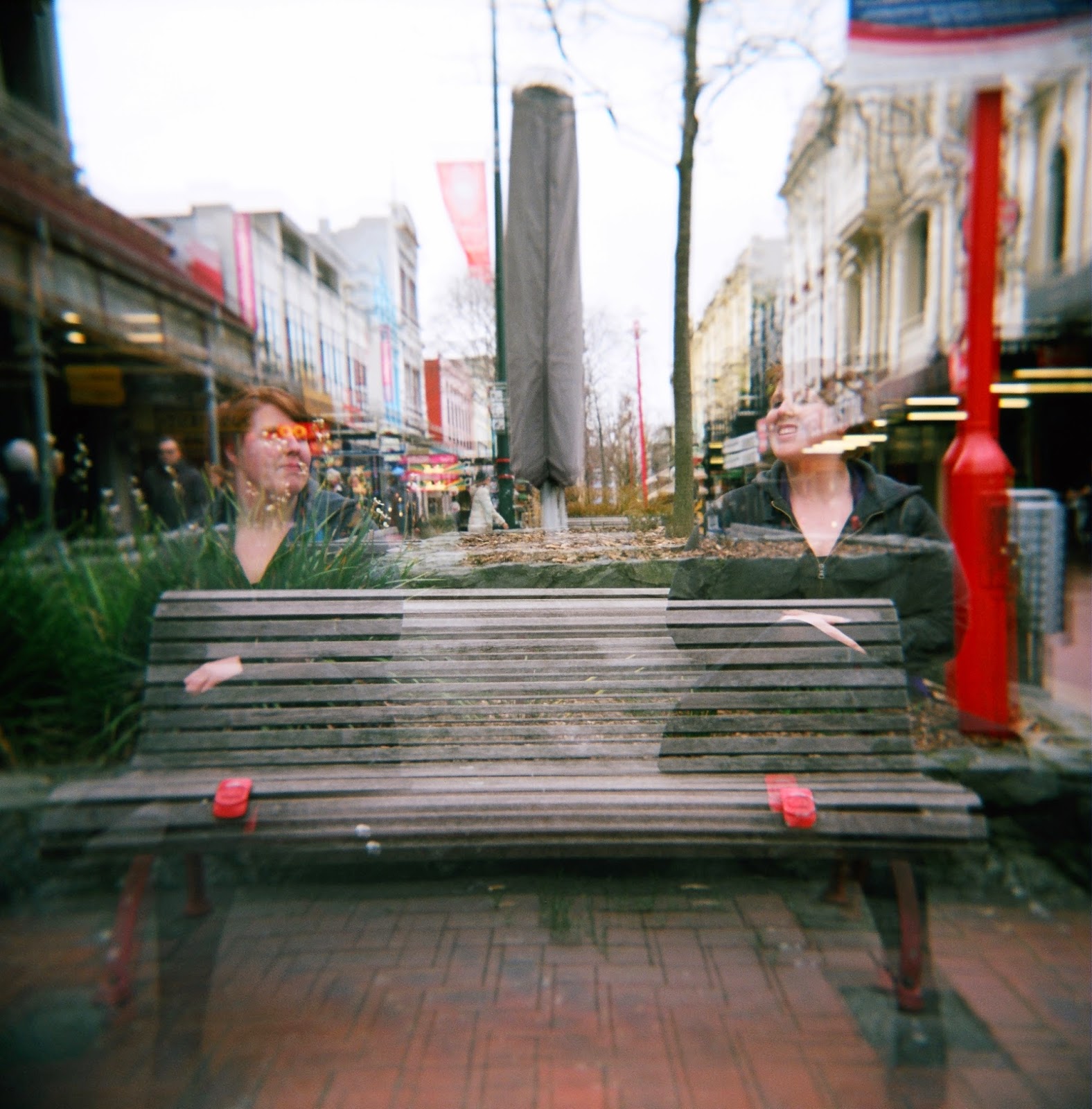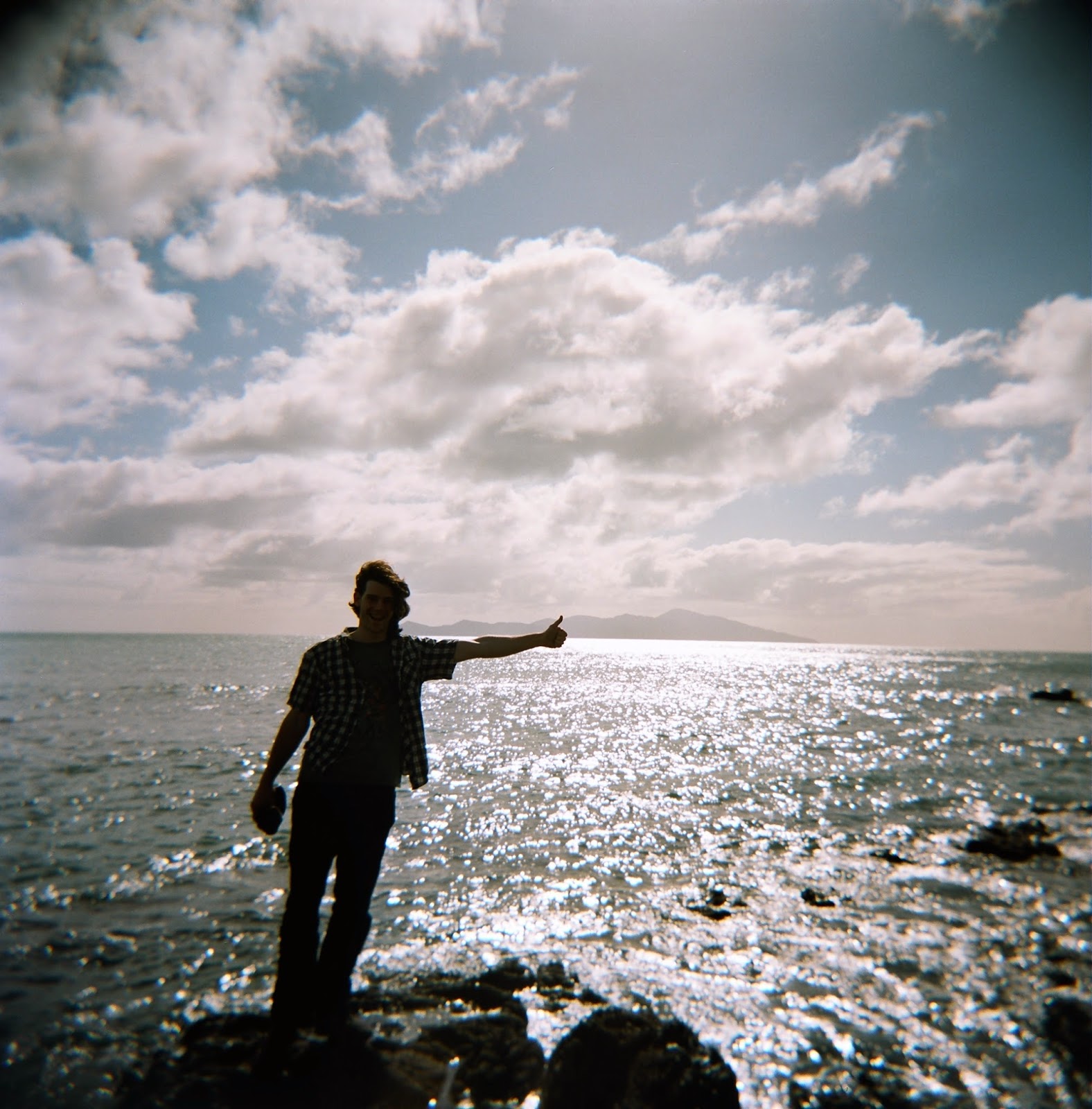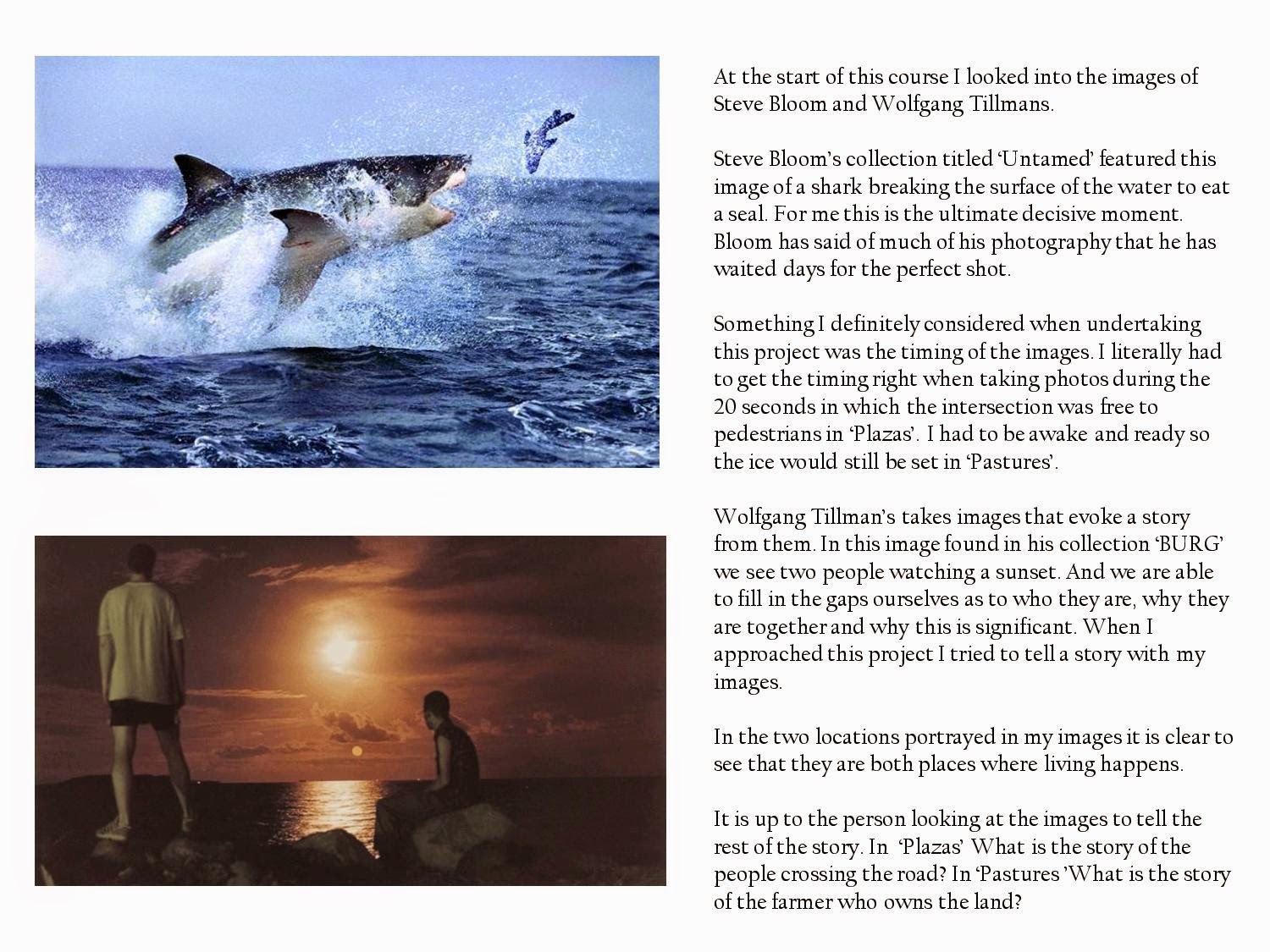My enthusiastic use of the Holga camera has led me to my first disappointment.
I approached the camera with some old black and white film I had found and bought off of trade me. and then went about taking images where and when I thought fit to do so. Without much consideration I took these images, eager to make comparisons between not only the colour film and the black and white film, but also between the square aspect ratio and the rectangular aspect ratio.
I shopped around at places to develop the film. I had previously used image lab who were reasonably priced and I had inquired in the photo warehouse who were ridiculously expensive. Wellington Photographic's offered me the best price yet; and the quickest service.
Upon picking the images up today I was shocked and disappointed that only only one of the images had exposed the way I had anticipated. A couple of the others had exposed just enough to identify what they are, but the majority of the images were not exposed sufficiently.
A lot of the images have strange white or grey sections on them and all of the images, although it is most noticeable in the darker images, have white specs all over them that sometimes appear to look like the sky on a starry night.
I also haven't figured out how to use the film scanner very well so my black and white images turned out like this.
The one image that is easy to make out is the bicycle wheels on the bottom which I may still be able to use.
Tuesday 26 August 2014
Friday 22 August 2014
Wednesday 20 August 2014
12 Shots with Holga
The second project for this course is analogue. As far as photography goes this is the most design related project I have encountered.
At Friday's lecture we were shown examples of previous work and thoroughly intimidated by how extreme some of them were. One person made clothing out of their images, another made a scratch film that caught fire.
I had no idea that we would be encouraged to remediate our images in such extreme enthusiastic ways. Personally I am embracing it and I already have an idea that is a bit outside of the box.
I have taken 12 images on the Holga thus far and am getting these developed at the trusty image lab around the corner (developing film is rather pricey). Of the images I have captured people, landscapes and some interesting buildings. I am interested at seeing the finished product and the quality of these images. I did some experimenting with double exposures these will be interesting to view.
My interesting idea for remediation of these images occured in Otaki where after checking both ways I lay down on in the middle of the train tracks and took a photograph (at my own risk; don't try this at home). Here I had the idea that I could develop the image and tape it to the railway track and assess its texture after it has been run over by a train.
I have never done it before but my friends have told me that you can bend a coin by putting it on the train tracks, I want to try to achieve a similar effect with my photograph.
I have also thought about expanding this idea to include other forms of transport, for example I would take an image of my car and then tape the image to one of the cars wheels and drive a distance before removing it.
I am sure I could also try to do this with bicycles, skateboards, and other modes of transport, but first I will test it on the developed images and on the train tracks. (Safely of course.)
At Friday's lecture we were shown examples of previous work and thoroughly intimidated by how extreme some of them were. One person made clothing out of their images, another made a scratch film that caught fire.
I had no idea that we would be encouraged to remediate our images in such extreme enthusiastic ways. Personally I am embracing it and I already have an idea that is a bit outside of the box.
I have taken 12 images on the Holga thus far and am getting these developed at the trusty image lab around the corner (developing film is rather pricey). Of the images I have captured people, landscapes and some interesting buildings. I am interested at seeing the finished product and the quality of these images. I did some experimenting with double exposures these will be interesting to view.
My interesting idea for remediation of these images occured in Otaki where after checking both ways I lay down on in the middle of the train tracks and took a photograph (at my own risk; don't try this at home). Here I had the idea that I could develop the image and tape it to the railway track and assess its texture after it has been run over by a train.
I have never done it before but my friends have told me that you can bend a coin by putting it on the train tracks, I want to try to achieve a similar effect with my photograph.
I have also thought about expanding this idea to include other forms of transport, for example I would take an image of my car and then tape the image to one of the cars wheels and drive a distance before removing it.
I am sure I could also try to do this with bicycles, skateboards, and other modes of transport, but first I will test it on the developed images and on the train tracks. (Safely of course.)
Friday 15 August 2014
Holga
Friday we started our adventure into project 2. Throughout the last week I have searched trade me and the local photo shops for fairly priced film. I ended up winning an auction in Auckland and the package got here in sonly a few days, The package contained an assortment of photo film. I will explore the use of these film types whether as they were intended or in other creative ways.
We have been told of the functions of the Holga camera and they are simple but sufficient.
The film must be loaded in the camera carefully by inserting the film into the left and then threading the film into the spool on the right side.
There is no zoom
There is a very basic focus that can focus on a person, a few people, a larger group of people, and mountains.
You must take off the lens cap to expose the film when taking images.
You can take photos in two ways B bulb mode and N normal mode. Normal mode exposes images at 1/60 of a second. Bulb mode exposes the image for as long as you hold down the shutter button.
There is a basic aperture control switch that changes between Sunny F11 and Cloudy F8.
Don't forget to wind the film after each exposure.
Don't expose the film to light when removing it from the camera.
We were also given the following "rules" to follow from the Lomo website:
1. Take your camera everywhere you go.
2. Use it anytime, day and night.
3. Lomography is not an interference in your life, but part of it
4. Try the shot from the hip.
5.Approach the objects of your homographic desire as closely as possible.
6. Don't think.
7. Be Fast.
8. You don't have to know beforehand what you captures on film.
9. Afterwards, either.
10. Don't worry about any rules.
We have been told of the functions of the Holga camera and they are simple but sufficient.
The film must be loaded in the camera carefully by inserting the film into the left and then threading the film into the spool on the right side.
There is no zoom
There is a very basic focus that can focus on a person, a few people, a larger group of people, and mountains.
You must take off the lens cap to expose the film when taking images.
You can take photos in two ways B bulb mode and N normal mode. Normal mode exposes images at 1/60 of a second. Bulb mode exposes the image for as long as you hold down the shutter button.
There is a basic aperture control switch that changes between Sunny F11 and Cloudy F8.
Don't forget to wind the film after each exposure.
Don't expose the film to light when removing it from the camera.
We were also given the following "rules" to follow from the Lomo website:
1. Take your camera everywhere you go.
2. Use it anytime, day and night.
3. Lomography is not an interference in your life, but part of it
4. Try the shot from the hip.
5.Approach the objects of your homographic desire as closely as possible.
6. Don't think.
7. Be Fast.
8. You don't have to know beforehand what you captures on film.
9. Afterwards, either.
10. Don't worry about any rules.
Tuesday 12 August 2014
Final Hand-in, Sheep in the City
Here is the presentation of my final hand-in.
Clearly these are images of the city with sheep edited into them. Each image has its own significance.
1. The sheep commute together en masse.
2. The sheep walk through the city together, note 'Lamb-ton quay'.
3. The sheep go into their office buildings/pens to work.
4. The sheep wait for the bus together, yet exclude the ones who are different, note 'Farmers'.
5. The sheep window shop together, influenced and influencing each other.
6. The sheep follow the leader blindly, note our political buildings in the background.
7. The sheep move together and neglect the less fortunate together.
8. This is my reflection. I too am a sheep.
The haiku is a summary of my feelings of all these people in the city, including me.
Clearly these are images of the city with sheep edited into them. Each image has its own significance.
1. The sheep commute together en masse.
2. The sheep walk through the city together, note 'Lamb-ton quay'.
3. The sheep go into their office buildings/pens to work.
4. The sheep wait for the bus together, yet exclude the ones who are different, note 'Farmers'.
5. The sheep window shop together, influenced and influencing each other.
6. The sheep follow the leader blindly, note our political buildings in the background.
7. The sheep move together and neglect the less fortunate together.
8. This is my reflection. I too am a sheep.
The haiku is a summary of my feelings of all these people in the city, including me.
Monday 11 August 2014
Near final
Here are the images that I am going to use as my final 8. They have a litle bit of tweaking to do including the addition of shadows and then they will be done.
Sunday 10 August 2014
Wellington CBD minus people
Here are the images from my Sunday morning shoot. it was a brisk morning but beautiful, the sun was coming up for one of Wellington's can't beat good days.
I went into the city at this time so that I could get images of the city less the people.
There are plenty of images that I should be able to manipulate to suit my narrative.
Being a flaneur
The flaneur society's guide to getting lost asks if when navigating the city "what if there was no point B?" As a student who has known Wellington for my whole life there is little of it where I really can get lost, and in a life so full of other priorities it is hard to find the time to get lost in the city.
I have made my own flaneur rule: allow an extra half hour of travel time and travel a route that you usually wouldn't. I still have an eventual destination but my journey takes me to new interesting places.
I also follow good advice that I learn in photographics. Always carry your camera with you.
One of the ideas that came across when being taught of the flaneur was to lose ones inhibitions. In most of these photos I was intoxicated and therefore my inhibitions were lowered and I was more relaxed to make navigational decisions and photographic decisions.
I have made my own flaneur rule: allow an extra half hour of travel time and travel a route that you usually wouldn't. I still have an eventual destination but my journey takes me to new interesting places.
I also follow good advice that I learn in photographics. Always carry your camera with you.
One of the ideas that came across when being taught of the flaneur was to lose ones inhibitions. In most of these photos I was intoxicated and therefore my inhibitions were lowered and I was more relaxed to make navigational decisions and photographic decisions.
 |
| From Newtown to Wellington after 9pm |
 |
| From Wellington to Newtown after 1.30am |
Cropped Sheep
Here are the images cropped out from their backgrounds.


From here I will need to find the best placement for for them in the city that communicates my ideas of following blindly and routine whether for good or bad ends.
Saturday 9 August 2014
Sheep
I searched up images mostly via 'Flickr' of sheep, under a creative commons license.
I will use some of these images to edit into images that I have taken of Wellington's CBD.
I will use some of these images to edit into images that I have taken of Wellington's CBD.
Friday 8 August 2014
5 - 7 - 5
Here is another Haiku, just because, it doesn't relate to my rural/city idea, however it does discuss how the different role that the city has during the day and at night.
I like the contrast between light and dark and the different purposes and people who occupy the city at different times for different reasons.
Day is business time.
Earn. Tire. Unbutton. Spend. Skank.
Night is business time.
I have been told that with Haiku you must stick to the 5 - 7 - 5 syllable format, however, if you pronounce something lazily or differently then you can use an alternate syllable count.
e.g. I have always pronounce business in two syllables even though it should be pronounced with three.
I like the contrast between light and dark and the different purposes and people who occupy the city at different times for different reasons.
Day is business time.
Earn. Tire. Unbutton. Spend. Skank.
Night is business time.
I have been told that with Haiku you must stick to the 5 - 7 - 5 syllable format, however, if you pronounce something lazily or differently then you can use an alternate syllable count.
e.g. I have always pronounce business in two syllables even though it should be pronounced with three.
Wednesday 6 August 2014
Subscribe to:
Posts (Atom)































